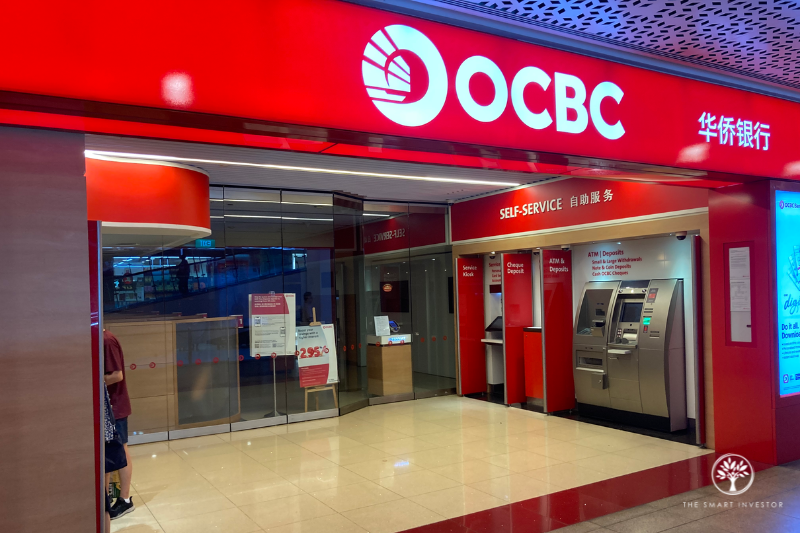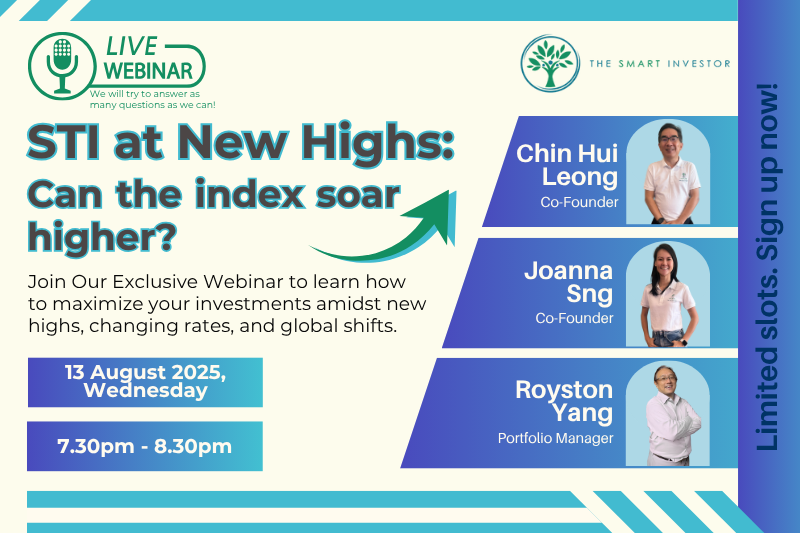Many investors may not realise the power of long-term investing, as the results take time to materialise.
Buying and holding on to a well-managed business can yield not just attractive capital gains but also provide you with a stream of ever-increasing dividends.
We illustrated this compounding effect by showcasing how much you would end up with had you bought supermarket operator Sheng Siong (SGX: OV8) at its IPO.
A similar example can be found here for land transport giant ComfortDelGro Corporation Ltd (SGX: C52).
Investors may be wondering if the same can be said for the local banks, so we dug deeper into Singapore’s second-largest bank, OCBC Ltd (SGX: O39), to find out.
Here’s how much you would end up with if you held OCBC’s shares for a decade.
A sterling total return
We go back in time to July 2015 when OCBC was trading at around S$10.20 per share.
If you had purchased 1,000 shares, it would have cost you S$10,200.
Fast forward to today, and shares of OCBC are trading at S$16.89 as of 11 July 2025.
Your shares would now be worth S$16,890, giving you an impressive 65.6% capital gain.
But hold on.
OCBC also pays twice-yearly dividends, and you would have enjoyed 10 years of dividends had you held the shares since July 2015.
The total dividend per share paid out by OCBC over the last decade amounted to S$5.448, which includes a special dividend of S$0.16 declared for 2024.
Your 1,000 shares of OCBC will entitle you to collect S$5,448 in total dividends over the last decade.
If you add this amount to the market value of your shares, you will end up with a total of S$22,338 or a 119% gain over your initial cost of S$10,200.
This 119% translates into a compound annual growth rate of 8.2% over 10 years, handily beating the long-term inflation rate of between 2% to 3%.
Sharp growth in total income and profits
OCBC shares would have provided you with a solid 10-year return had you held on to them.
You may be wondering, though, as to why OCBC was able to deliver such a stellar total return.
That’s because the bank has grown its business significantly since 2014.
Total income jumped from S$7.9 billion in 2014 to S$14.5 billion by 2024.
The lender’s operating profit before allowances increased from S$4.7 billion to S$8.7 billion over the same period.
Crucially, OCBC’s net profit doubled from S$3.8 billion in 2014 to S$7.6 billion in 2024.
The bank’s dividend payouts have also been increasing in tandem with its financial results, with 2020 being the exception because of the outbreak of the pandemic.
Hence, it’s not surprising to see your investment more than double because OCBC managed to double its net profit over the past decade.
The best is yet to come
You may be curious, though, as to whether OCBC can continue to deliver solid returns in future.
For the first quarter of 2025, total income inched up 1% year on year to S$3.7 billion, but net profit dipped by 5% year on year to S$1.9 billion.
Notwithstanding this dip, OCBC maintained its 2025 financial targets for mid-single-digit loan growth along with net interest margin (NIM) hovering around 2%.
As of this writing, the US Federal Reserve has yet to lower interest rates as officials are concerned about inflation and are also seeing a strong jobs market.
President Trump has also renewed his tariff announcements after the 90-day pause with a barrage of tariffs for various countries.
Assuming these tariffs are incorporated into supply chains, it should result in higher prices for goods and services, stoking further inflation.
Thus, the “higher for longer” interest rate scenario may play out, benefitting OCBC by keeping its NIM high.
The bank also enjoys higher fee income from wealth inflows into Singapore and the region, along with higher credit card spending.
Great Eastern and a new CEO
Meanwhile, OCBC will also recognise higher earnings from Great Eastern Holdings (SGX: G07) as it raised its stake in the insurer from 88.44% in May 2024 to the current 93.72%.
Last week, the lender also announced the appointment of Tan Teck Long as the group’s new CEO, who will succeed Helen Wong when she retires on 31 December this year.
Mr Tan has been the Head of Global Wholesale Banking since joining OCBC in March 2022, and has more than 30 years of banking experience.
Get Smart: The power of long-term investing
This example shows the power of long-term investing in building and growing your wealth for retirement.
By owning shares of a strong business such as OCBC, you can grow your nest egg over time and also build up a larger dividend stream.
The good news is that OCBC looks well-positioned to continue delivering solid returns for its shareholders.
All you need is patience and the willingness to hold the shares through market volatility.
When the market is unpredictable, where can you park your money with confidence? Our latest FREE report reveals 5 Singapore dividend-payers built to withstand global storms. Get it now and see what’s still worth holding.
Follow us on Facebook, Instagram and Telegram for the latest investing news and analyses!
Disclosure: Royston Yang does not own any of the shares mentioned.






